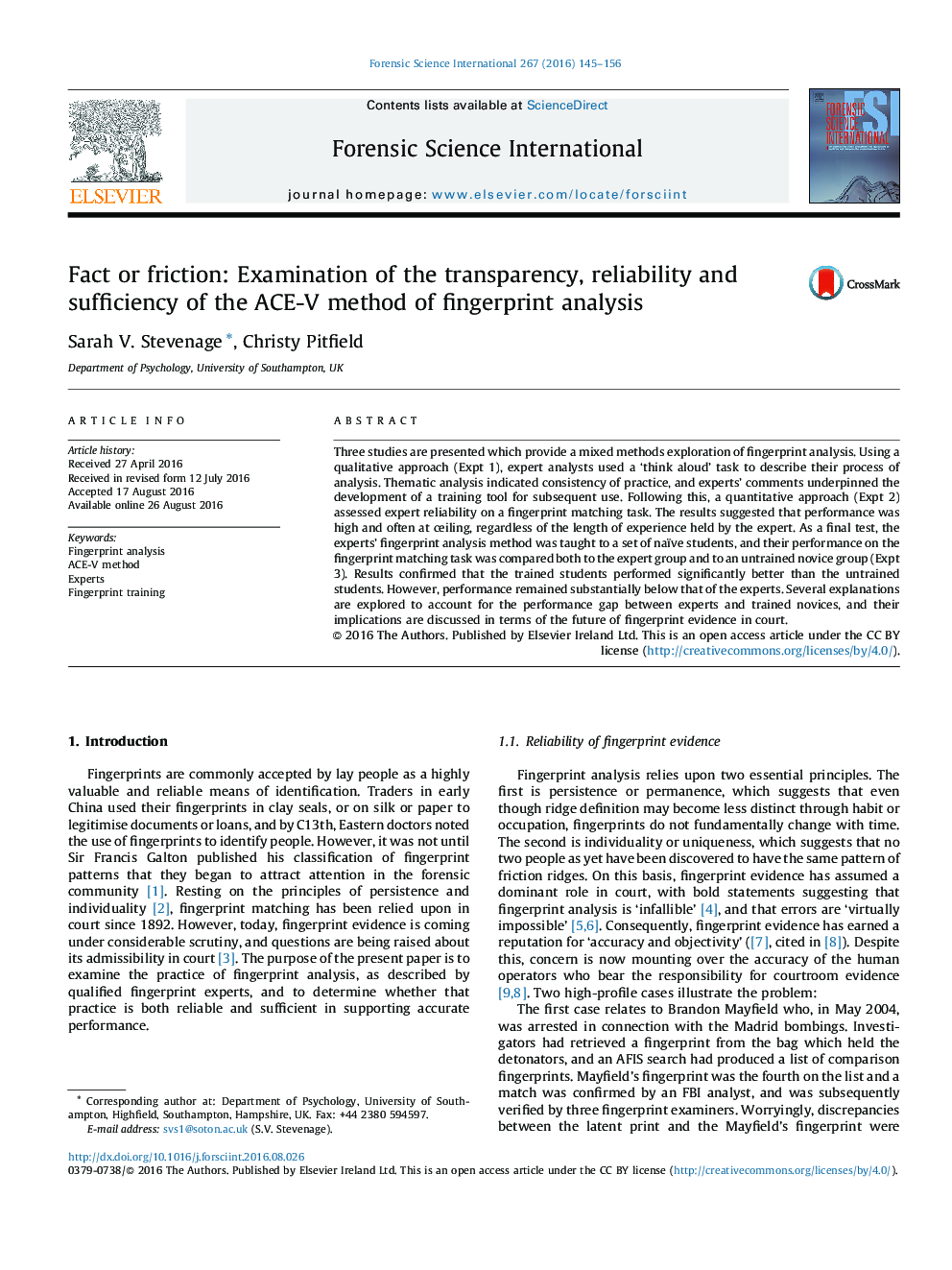| Article ID | Journal | Published Year | Pages | File Type |
|---|---|---|---|---|
| 6462642 | Forensic Science International | 2016 | 12 Pages |
â¿¢Expert interviews provide transparency to the ACE-V method of fingerprint analysis.â¿¢Performance on a fingerprint task establishes reliability of ACE-V decisions.â¿¢Experts out-perform trained novices.â¿¢Expertise relies on more than the application of the ACE-V method.â¿¢Fingerprint analysis relies on practise and feedback as well as a transparent process.
Three studies are presented which provide a mixed methods exploration of fingerprint analysis. Using a qualitative approach (Expt 1), expert analysts used a â¿¿think aloudâ¿¿ task to describe their process of analysis. Thematic analysis indicated consistency of practice, and expertsâ¿¿ comments underpinned the development of a training tool for subsequent use. Following this, a quantitative approach (Expt 2) assessed expert reliability on a fingerprint matching task. The results suggested that performance was high and often at ceiling, regardless of the length of experience held by the expert. As a final test, the expertsâ¿¿ fingerprint analysis method was taught to a set of naïve students, and their performance on the fingerprint matching task was compared both to the expert group and to an untrained novice group (Expt 3). Results confirmed that the trained students performed significantly better than the untrained students. However, performance remained substantially below that of the experts. Several explanations are explored to account for the performance gap between experts and trained novices, and their implications are discussed in terms of the future of fingerprint evidence in court.
